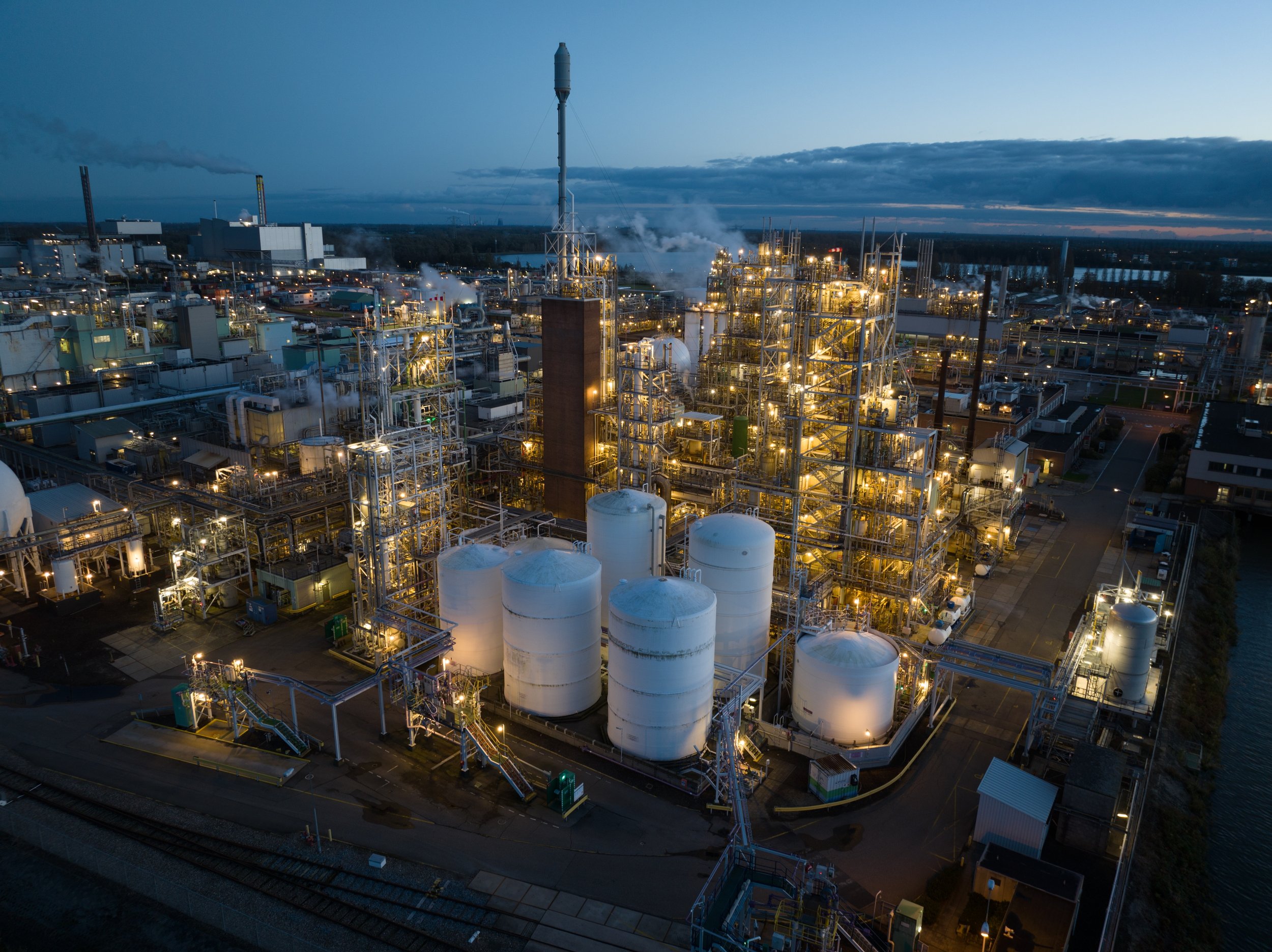A PFAS Update: The Forever Chemicals.
Lawsuits, Standards, & Solutions.
Back in 2020, our firm penned two successive newsletters on an emerging group of contaminants that received ample press at the time, both nationally and internationally, with some pretty strong local/regional roots. Those contaminants belonged to a large group of man-made/synthetic chemicals known as per- and polyfluoroalkyl substances, or better known by the umbrella name PFAS.
We first circulated those articles four years ago, when the PFAS train had already left the station and was picking up speed. If you have an interest in PFAS, we suggest you either read, or revisit, those two articles; they serve as a good primer on the subject. They can be accessed via the links to the right.
Our 2024 PFAS update continues below.
Read on…
What has happened since 2020 on the PFAS front? A lot.
The PFAS trajectory over the past four years can be best captured in three words:
Lawsuits — lots of them — with billions of dollars in play;
Standards — a whole patchwork of Federal and State regulatory PFAS guidelines have been promulgated for drinking water, groundwater, soils, and consumer products, many of them conflicting and contradictory; and
Solutions — the beginning of some long-term, viable remedial solutions to this class of recalcitrant chemicals that are known as 'forever chemicals', because they are incredibly stable and hard to break down naturally, expecting to last hundreds, if not thousands, of years in the environment. And since they are toxic/carcinogenic, and tend to bioaccumulate in plants and animals — including people — practical solutions to successfully and economically break down these chemicals are really important.
But before we delve into the three salient topics above, lawsuits, standards, and solutions, we should take a few minutes to recap why PFAS is a topic of interest to just about anyone. Even if you read the 2020 blogs above, the recap below is helpful to set the 2024 PFAS table.
PFAS Primer, A Recap:
Why should you even care about PFAS compounds?
The answer is simple, because if you are like 97% to 99% of the rest of us, you already have PFAS coursing through your bloodstream and bio-accumulating in your organs as you read this.
And PFAS compounds are not body-friendly chemicals; they are highly toxic, carcinogenic and they tend to stick around inside us, accumulating at ever-higher concentrations in our blood and organs over time. So having them inside your body is a big deal, in a bad way.
How can they hurt you? In a lot of ways. PFAS in our bodies has been linked to a variety of serious medical conditions, including, but not necessarily limited to, the following:
Breast, testicular, pancreatic, prostate, liver and kidney cancers;
Infertility and abnormal fetal development/defects, including low birth weight babies, reduced bone density in children, delayed puberty in girls, and pregnancy-induced hypertension;
High blood pressure, cardiovascular disease, and elevated cholesterol levels;
Thyroid disease, colitis; and
Overall immune system suppression and limiting the effectiveness of commonly administered vaccines.
To hurt you, they first have to get inside you; how do they do that? In a variety of ways. Mainly through ingestion (eating and drinking things that contain PFAS compounds), but also inhaling them and, to a much lesser extent, absorbing them through the skin. All these routes are viable to be exposed to PFAS.
PFAS are basically sets of carbon and fluorine atoms, arranged in all sorts of different, long chemical chains and configurations. They are all man-made, synthesized in laboratories, and no one really has an accurate count of how many different PFAS have been created, but the numbers are staggering — the estimates range from 5,000 to 12,000 or more different PFAS chemicals exist, and new ones are being manufactured every day. Of these, about 600 are in common commercial use, according to the United States Environmental Protection Agency (EPA); the thousands of others have been 'created', but are basically being shelved, not yet in wide circulation, but possibly so in the future. Think of it as a conveyor belt of PFAS compounds, with new ones replacing any old ones that are deemed problematic. The rub is, that these combinations of carbon and fluorine atom chains have all been found to be toxic, once studied — none to date have been determined 'safe'. However, a majority of them have never been properly tested, if tested at all; so the specific toxicological effects of each compound are simply unknown.
If these PFAS compounds are so toxic and dangerous, why do companies keep making them?
The answer is quite simple... because PFAS are really good at doing a few critical tasks that people care about, which make their lives much easier, which means they are willing to pay for products that contain these chemicals. In particular, PFAS compounds are very good at resisting stains, oils, grease, and water, and they don't break down easily in high heat, nor do they corrode. And, to top it off, they are fairly cheap to manufacture, which means they are very profitable for the limited number of chemical manufacturers that make them and weave them into all sorts of consumer products.
Because of all those desirable properties and the prospect of lucrative sales, PFAS find their way into a myriad of everyday products that you likely come in contact with; the list is so extensive, it touches most of our lives in multiple ways, multiple times, every day — reaching all corners of the main consumer market. Even if you made a concerted effort to avoid PFAS compounds, you would be hard-pressed to do so.
Below is just a partial listing of the common products that routinely contain PFAS compounds:
A variety of cosmetics, including foundation, mascara, lipstick,and hair dyes;
Deodorant, sunscreen, shampoo, shaving cream, dental floss, and toilet paper;
Bed sheets and bath towels;
Carpeting (including Scotchgard and Stainmaster), vinyl flooring, upholstery, draperies, weatherproof windows, and even the paint on the walls;
Pizza boxes, popcorn bags, and all types of take-out food packaging and plastic product wrappers of every shape and size at the supermarket;
Many of the vegetables, meats, poultry, and fish you consume (i.e., that flora/fauna absorb/bioaccumulate PFAS from the environment — via soils, rainwater, groundwater, and consuming flora/fauna further down the food chain);
Dust in your house, and the common cleaning products you use to spray and wipe up that same dust;
Medical devices and face masks (including N95 masks) meant to protect you from other harmful chemicals;
Sneakers, ski wax, raincoats/rain gear, Tyvek protective chemical suits/firefight suits, Gore-Tex, and any other stain-guard and/or waterproof-coated fabrics (which includes most of the clothes we wear every day);
Non-stick pots/pans (including Teflon) and various kitchen paraphernalia, including Tupperware and other plastic container-ware;
Television, cell phone/smartphone, and laptop/computer screen protectors/optic-enhancing films that we constantly touch;
Artificial turf, pesticides used on real turf/lawns, and the rainwater that falls on those lawns;
Reflective highway signs;
A whole host of menstrual products, including tampons, napkins/pads, and cups;
Post-It notes, adhesive tape (including Scotch Tape); and
The list goes on and on and on — well over 100,000 products we all use, every day, include PFAS compounds.
The point being, as long as PFAS compounds are still being manufactured and used, which they are (the production and use of PFAS is still largely unregulated), no one, anywhere in the world, is reasonably going to avoid coming in contact with items containing PFAS compounds — they are ubiquitous because people demand products that are heat resistant, stain-resistant, water-resistant, and slippery.
And the PFAS in all those products can very easily get into your system as described earlier.
The rub is that the PFAS levels that are considered dangerous to humans are extremely low — so low that most analytical laboratories are not even equipped to analyze levels that small —they simply don't have testing apparatus that is sensitive enough to detect them. By way of example, one PFAS compound that is regulated (called PFNA) in New Jersey has a standard of 13 parts per trillion (ppt). How small is 13 parts per trillion? Conduct this little experiment on your own: Count off 13 seconds — that is the PFNA allowable standard in New Jersey, or the allowable 'slice of the pie'. Now continue counting off seconds till you get to a trillion... that constitutes the rest of the pie.
Keep counting. Have you finished?
I doubt it, since to count off those trillion other seconds would take you about 31,710 years. That little exercise hopefully will give you a sense of just how tiny 13 ppt really is, yet that is the standard that has to be met, since Federal and State regulatory agencies have determined that at that low, low level, PFAS are harmful to humans. More on those PFAS standards later.
So where did these new PFAS compounds come from? Well, they actually aren't so new.
In fact, PFAS compounds were first discovered, as are most chemical product breakthroughs throughout history, by accident, when chemists were actually looking for something else. In the case of PFAS, their origins can be traced back to a lab at DuPont, in 1938, when what is believed to be the first PFAS compound (perfluorooctanoic acid, or PFOA) was discovered by a 27-year-old chemist, who was looking for some stable refrigerants. This first discovery 86 years ago led to advances in uranium enrichment/explosive stabilizers during the development of the Manhattan Project in the early/mid 1940's (i.e., the first atomic/nuclear bomb project). PFOA was ultimately used as a primary ingredient in the early 1940s in that ubiquitous PFAS product that we know today as Teflon. Other chemists working for Minnesota-based competitor 3M Company discovered alternate PFAS-type compounds soon thereafter, in the early-mid 1940s, when using fluorine gas as part of a series of atomic research studies.
Through internal company toxicological testing, 3M knew some of the PFAS compounds they were manufacturing were dangerous as early as the 1950s — testing continued on laboratory animals through the 1960s and 1970s, at which time 3M also was aware that the PFAS they made had impacted groundwater supplies. DuPont knew of the dangerous toxicological and biological effects of Teflon and other PFAS compounds as early as 1966.
Yet nothing material was done regarding addressing the ill effects of these chemicals by 3M, DuPont, or any regulatory agency until the late 1990s, almost 60 years after their discovery, and 40 years after it was known the chemicals were dangerous to animals and people.
So what happened?
People got sick, it was suspected that PFAS was the reason and Pandora's Box was opened.
Specifically, people and animals got sick (and had been getting sick for years — the cause at the time was unknown) in Parkersburg, West Virginia, from being exposed to PFAS in the drinking water, due to dumping by DuPont of PFAS waste into unlined landfills, lagoons and directly into the Ohio River. A lawsuit was filed against DuPont in/around 1998 and the house of cards regarding PFAS and its ill effects began to fall. If you rent the 2019 movie Dark Waters, it will capture the essence of that DuPont lawsuit, which was really the beginning of the public PFAS debacle that had been bubbling behind the curtains/out of public view since the 1950s. The cow was out of the barn.
Our next blog will discuss that lawsuit, and the thousands of individual and class-action suits that have followed, and continue en force to this day. It is what drove the beginnings of the current PFAS movement. There is no end in sight to the nature and breadth of this ongoing litigation against DuPont, 3M, and a host of other manufacturers and suppliers. Monetary settlements to date total in the multi-billions of dollars, paid by DuPont, 3M, and others, with many more suits in progress and pending. 2024 is still pretty close to the tip of the iceberg — we expect this PFAS-related litigation to continue for many years to come, resulting in billions of additional dollars of plaintiff awards.
Stay tuned for our next blog…
PFAS Litigation — Where it’s Gone & Where it’s Going.
Please note, the information provided in this newsletter relating to PFAS and associated compounds is strictly for informational purposes only and should not be construed as recommendations or advice on how to treat, remediate, or handle PFAS in any manner; our firm assumes no liability of any kind regarding same.





